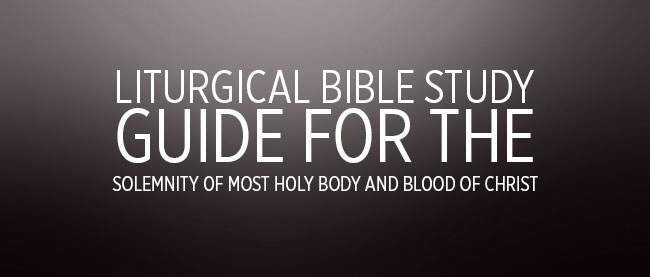Introduction
The purpose of the feast of Corpus Christi is to instruct the people in the mystery, faith, and devotion surrounding the Eucharist. The celebration of the feast evolved during the 13th and 14th centuries, having been preceded by the mid-11th century Berengarian heresy. Berengar of Tours was an archdeacon who taught that the presence of Christ in the Eucharist was more symbolic than real.
By the 13th century reception of communion was less emphasized and was to some extent superseded by merely seeing the Host. At this time (1209) Juliana of Liège, an Augustianian nun, had a vision which demanded a feast for the Eucharist. After much persuasion the feast was celebrated for the first time in 1247, and extended to the whole
Church in 1264. Resistance to the feast was found in Rome and Liège, but by 1317 its celebration had spread throughout the world.
There is trustworthy evidence that Saint Thomas Aquinas composed two offices for the feast, but it is not at all clear that the office now used is one is of them.
1st Reading – Exodus 24:3-8
Today’s first reading takes place at the foot of Mount Sinai. Moses has gone up on the mountain and received verbally the ten commandments as well as the rules concerning Hebrew servants, personal injuries, protection of property, social responsibility, and justice and mercy (Exodus 20 through 23). Moses then comes to the people and tells them of the covenant which God has offered them. A covenant is a family bond, entered into freely,
binding perpetually, and sealed in blood. The Sinai covenant was between God and Israel. God promised to be the God of Israel; Israel promised to keep all the commands of the Lord. Moses took the blood of animals which had been sacrificed and sprinkled it on the altar (representing the presence of God) and the people (indicating their participation in the covenant).
It is after this reading that Moses ascends the mountain to receive the first set of stone tablets.
2nd Reading – Hebrews 9:11-15
It is very likely that the Hebrews to whom this epistle is addressed were Christians of Jewish background, possibly former priests. Thus, they are familiar with the ceremonies of Mosaic worship. The main purpose of this epistle is to show the superiority of Christianity over the Old Covenant – and how the New Covenant fulfills the old. It focuses on Christ’s priesthood and shows how this priesthood and His sacrifices are superior to those of the Levitical priesthood.
Gospel – Mark 14:12-16, 22-26
Today’s gospel reading is familiar – we heard it as part of the passion narrative on Palm Sunday. What we hear today are some of the events leading up to Jesus’ eating the Passover meal with His disciples in the upper room.


